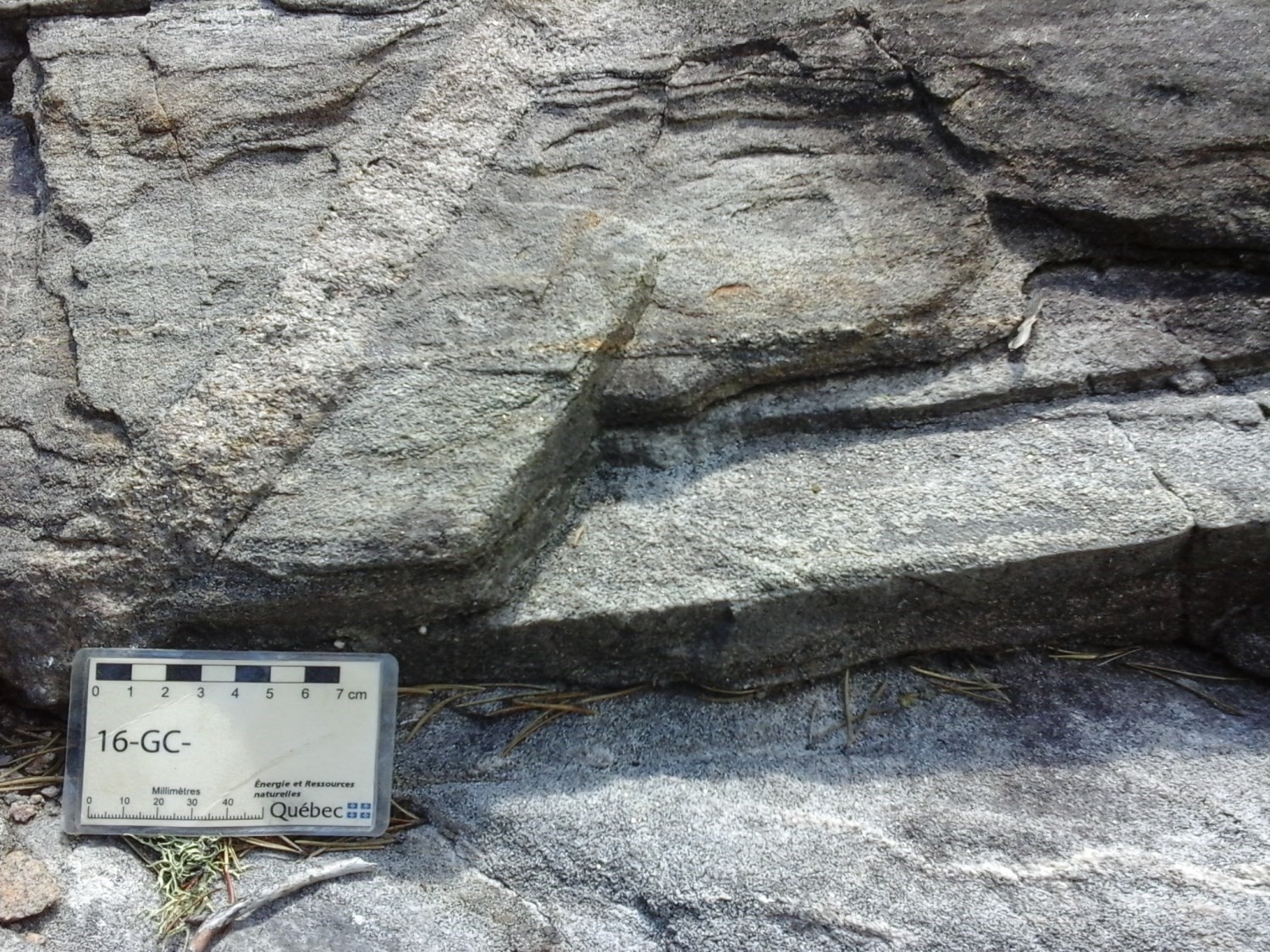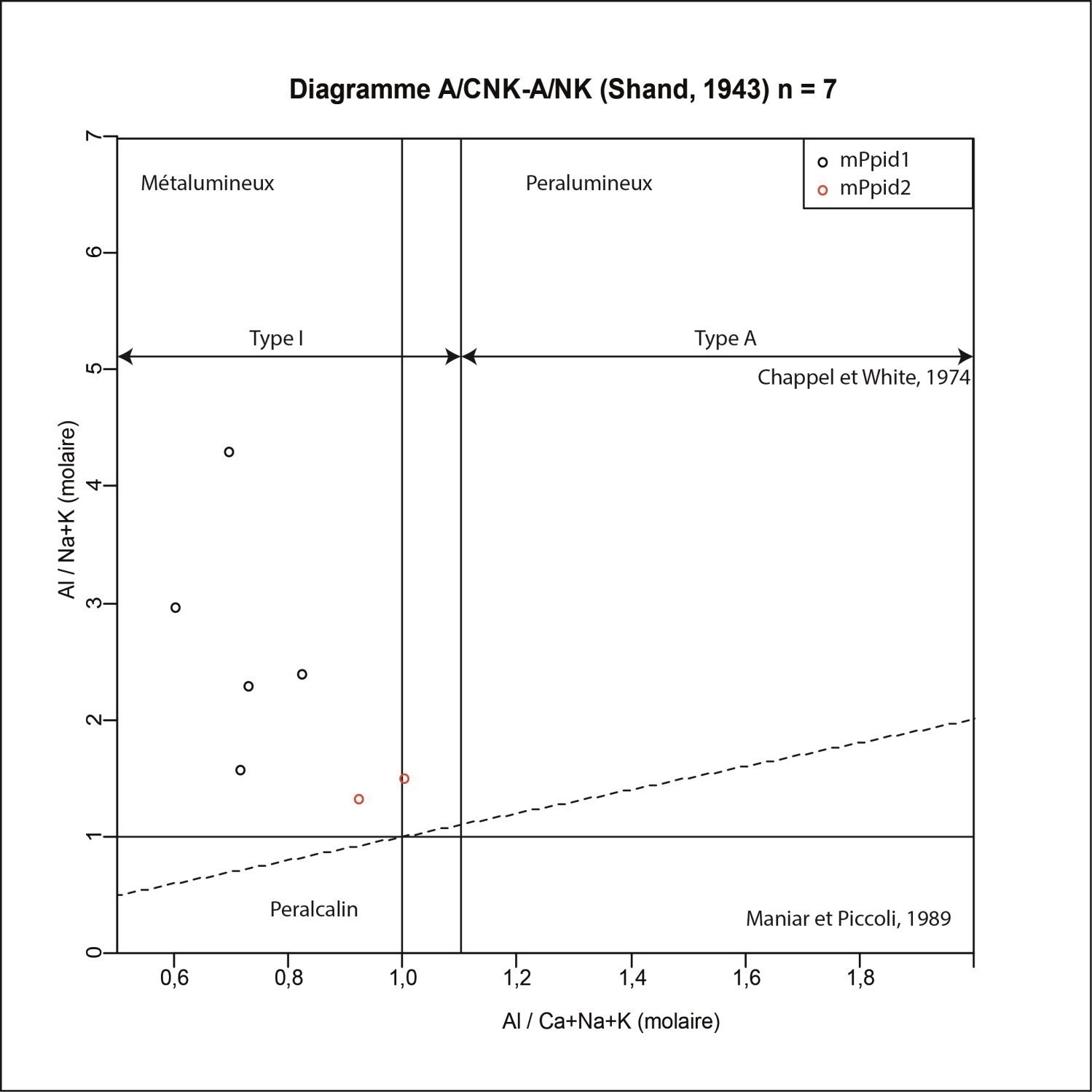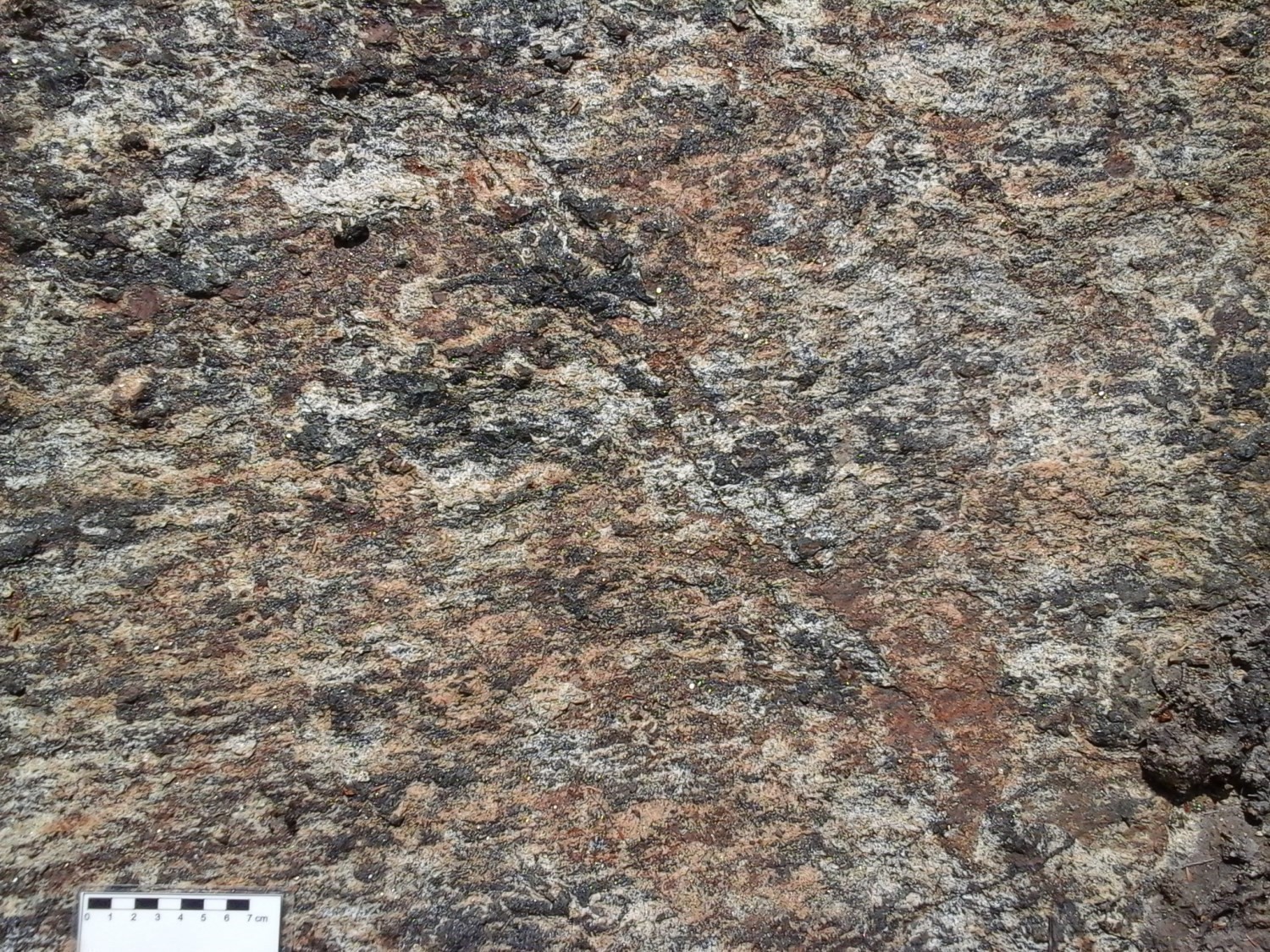
| Author: | Moukhsil and Côté, 2017 |
| Age: | Mesoproterozoic |
| Reference section: | Foliated gabbronorite outcrop (mPpid1) (outcrop 16-AE-2024A) |
| Type area: | NTS sheet 31P11 |
| Geological province: | Grenville |
| Geological subdivision: | Allochton |
| Lithology: | Intermediate, felsic and mafic intrusive rocks |
| Type: | Lithodemic |
| Rank: | Suite |
| Status: | Formal |
| Use: | Active |
None
Background
The Pieds Mouillés Intrusive Suite was defined by Moukhsil and Côté (2017) during geological mapping of the Wemotaci area in Haut-Saint-Maurice, Quebec.
Description
The Pieds Mouillés Intrusive Suite consists of two mappable units: mPpid1 and mPpid2. Rocks of this suite are of various compositions with contents ranging from 43 to 71% SiO2. Rocks of the gabbronoritic facies have Mg# (100*Mg/[Mg+Fe]) up to 85. On spider diagram normalized to the primitive mantle (Taylor and McLennan, 1985), these rocks show negative Nb and Ta anomalies, which may indicate emplacement in a volcanic arc environment.
Pieds Mouillés Intrusive Suite 1 (mPpid1): Trace-Sulphide Gabbronorite, Minor Amounts of Mangerite, Granite and Charnockite
Unit mPpid1 consists of gabbronorite with trace sulphides and minor amounts of gabbro, mangerite, granite and charnockite. Gabbronorite is medium grained and foliated. It is locally leucocratic and pegmatitic and is composed of orthopyroxene, clinopyroxene, biotite and plagioclase. Orthopyroxene is locally rimmed by clinopyroxene and plagioclase is sericitized. This rock is recrystallized and contains trace sulphides (pyrite, pyrrhotite and chalcopyrite). Apatite is present as a secondary mineral. Leuconorite and pegmatitic leuconorite contain orthopyroxene, biotite, plagioclase, as well as white mica (secondary muscovite), apatite, zircon and carbonates as accessory minerals. Plagioclase is antiperthitic in places and pyrite and chalcopyrite are present as opaque minerals. Medium-grained charnockite is foliated to mylonitic in fault zones. It is composed of orthopyroxene, plagioclase, biotite and K-feldspar, antiperthite and myrmekite. Biotite is observed along orthopyroxene edges and apatite (<1%) is mainly found as inclusions in biotite. Medium-grained and deformed gabbro and granite represent the two least abundant facies of this unit.
Pieds Mouillés Intrusive Suite 2 (mPpid2): Mangerite, Minor Amounts of Gabbronorite and Charnockite
Unit mPpid2 consists of the same lithologies as unit mPpid1, but distinguishes itself from the latter by a higher proportion of medium-grained and locally porphyritic mangerite. This rock contains orthopyroxene, biotite and amphibole as mafic minerals. Amphibole appears to be associated with orthopyroxene and is the result of retrograde metamorphism (uralitization).
Thickness and Distribution
This unit is located in the southeast corner of sheet 31P11.
Dating
None.
Stratigraphic Relationship(s)
The Pieds Mouillés Intrusive Suite intrudes into the Vermillon Plutonic Suite. It also contains deformed kilometric klippes of the Wabash Complex.
Paleontology
Does not apply.
References
| Author(s) | Title | Year of Publication | Hyperlink (EXAMINE or Other) |
|---|---|---|---|
| MOUKHSIL, A. – CÔTÉ, G. | Géologie de région de Wemotaci, Haut-Saint-Maurice (Partie ouest du Grenville). Ministère de l’Énergie et des Ressouces naturelles, Québec, 44 pages, 2 maps. | 2017 | RG 2017-03 |





